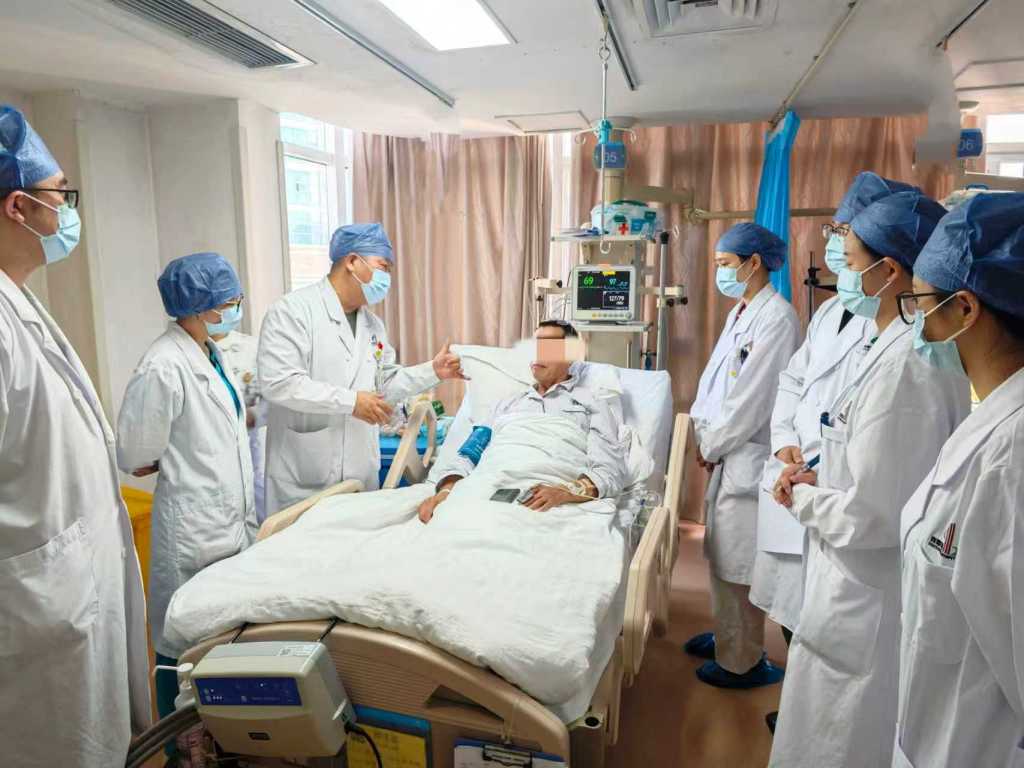
On October 21, The Paper (www.thepaper.cn) learned from the Southwest Hospital of the Army Medical University that the hospital's respiratory department recently successfully treated a patient who developed a pulmonary embolism after an extended period of driving. Chen Yongfeng, deputy chief physician of the department, advises drivers to get out of the car and stretch their lower limbs after every one to two hours to increase circulation. It is also recommended to drink plenty of water during extended driving to dilute blood viscosity and prevent thrombosis.

Medical staff check on Wang Lu's recovery. Photo provided by Southwest Hospital
According to reports, 60-year-old patient Wang Lu (pseudonym) experienced pain in his right upper chest the next day after driving for over six hours. This pain gradually spread to the entire right side of his chest. After a short rest, Wang Lu felt the symptoms ease and ignored them. However, he unexpectedly experienced recurring pain in his right chest over the following days, which spread to the entire chest. Accompanied by his family, Wang Lu went to Southwest Hospital for treatment.
Taking into account various indicators and Wang Lu's smoking history, the medical team determined that Wang Lu had suffered a moderate-to-high-risk pulmonary embolism, requiring urgent interventional thrombectomy. Following this diagnosis, the team immediately admitted Wang Lu to the respiratory intensive care unit and performed an inferior vena cava angiography with filter implantation to effectively prevent the exacerbation of the pulmonary embolism caused by the dislodged lower limb clots. The team then provided Wang Lu with anticoagulant and anti-infective treatment. Under the meticulous care of the medical staff, Wang Lu successfully recovered and was transferred to a general ward for further treatment.
"Uncle Wang drove for more than six hours before he fell ill. He sat for a long time and drank less water during the journey, which led to slow blood flow in his lower limbs. The blood was in a hypercoagulable state, causing the blood in the lower limbs to coagulate into blood clots in the blood vessels. After the blood clots fell off, they flowed to the lungs with the blood flow, blocking blood supply to multiple blood vessels in the lungs, and eventually leading to pulmonary embolism." Professor Chen Yongfeng said that pulmonary embolism is mostly acute in onset, and common symptoms include sudden dyspnea, severe chest pain, hemoptysis, and syncope. Deep vein thrombosis in the lower limbs is the main source of blood clots causing pulmonary embolism.
Professor Chen Yongfeng reminds drivers that the key to preventing pulmonary embolism lies in "movement." "Specifically, long-distance drivers should regularly stop and move around. That means every 1-2 hours of driving, they should stop and rest for 10-15 minutes. They can get out of the car and walk around, doing exercises like standing on tiptoe, bending their knees, and lifting their legs to promote blood circulation in the lower limbs and prevent blood congestion. At the same time, drivers should wear loose pants and socks to avoid wearing tight clothing that compresses the blood vessels in the lower limbs and affects blood flow. Furthermore, drivers should drink a moderate amount of water before and during driving to reduce blood viscosity and the risk of thrombosis. Finally, if drivers experience leg swelling, numbness, or mild chest pain, they should not try to endure it. They should stop and rest immediately. If the symptoms persist, they should seek medical attention as soon as possible," said Chen Yongfeng.